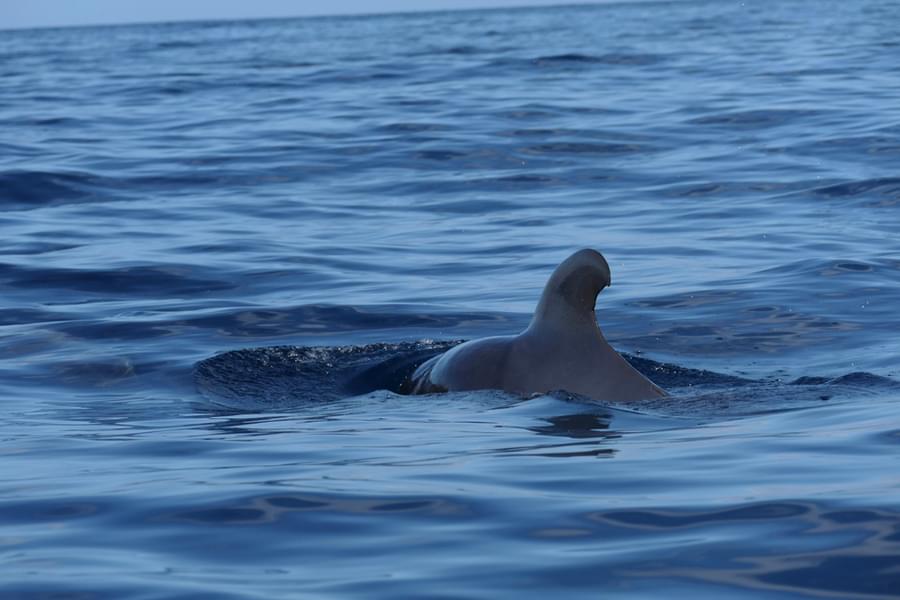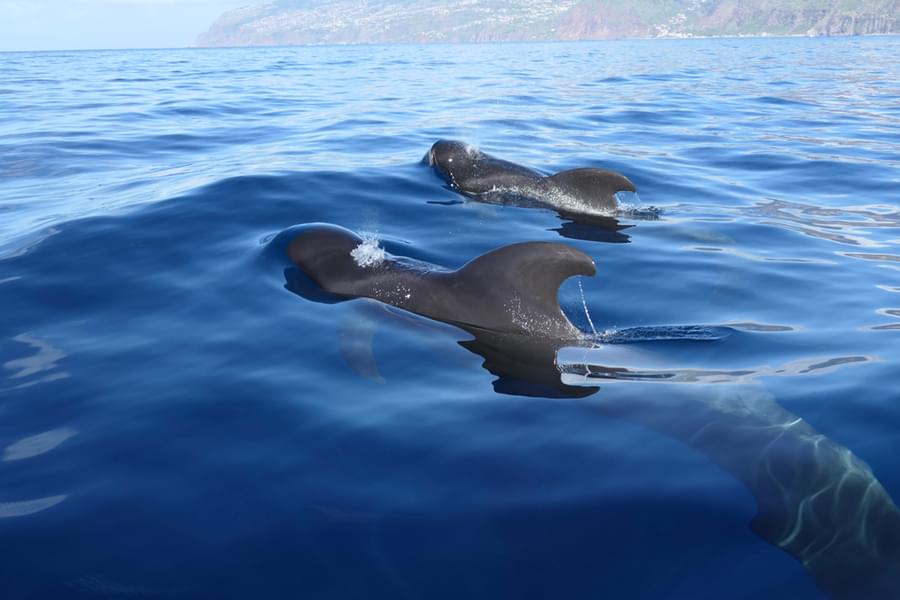Hello everyone, Ocean Conservationist Mathilde here with a look back on an amazing trip to the warm waters and temperatures of the Canary Islands.
What would you do if at two weeks’ notice, you got a call asking if you could join a two-week cruise to the Canary Islands? Especially when you already know that the Canaries are considered something of a dolphin hotspot, with species living in these warm subtropical waters all year round. Of course, you say ‘Yes!”
And so, just two weeks later, I found myself, on the sunny island of Tenerife, ready to board P&O Cruises Azura.
The Canary Islands, Madeira and the Azores are part of the Macaronesia islands. This part of the Atlantic Ocean is very deep, with the volcanic islands suddenly rising from the depths. This results in a huge upwelling of nutrients, which makes these waters rich as a food source, good for biodiversity and amazing for cetaceans. And as the waters are generally quite warm, this also makes for amazing nurseries for species such as the sperm whale. And the ocean depth, up to 4000m, could give us a good chance of seeing some more elusive species, such as beaked whales.
As many as 30 different cetacean species can be found at home in the Canaries. Even though sightings decrease in the winter months, that doesn’t mean there are no cetaceans to be seen. Far from it, in fact, since during this cruise, we saw short-finned pilot whales, bottlenose dolphins, common dolphins, striped dolphins, Atlantic spotted dolphins, Risso’s dolphin, sperm whales, unidentified beaked whales and 2 unidentified baleen whales. Some of these species were a very exciting first for me! Most of the dolphins undertook some amazing acrobatic shows next to the ship whilst crossing the Atlantic Ocean between the Canaries and Madeira. During whale-watching trips from the islands, it was mostly the short-finned pilot whales that stole the show. These sightings were particularly special against the backdrop of clear blue waters, so we were able to see these beautiful animals swim underwater. These warm sub-tropical waters are also home to the loggerhead sea turtle and the green sea turtle, and the Portuguese man of war, a very beautiful and toxic jellyfish.
The residents
The Canaries are home to resident family groups of short-finned pilot whales and bottlenose dolphins. The short-finned pilot whales especially love these waters. Between the islands, the water depth can be 1200m, and pilot whales are a deep-diving species that love to feed on squid. A small group of guests and I got to see this beautiful species during a whale-watching trip off the coast of La Palma. We first spotted the pilot whales swimming just off the coast, and then a few minutes later, a pod of bottlenose dolphins came toward the pilot whales, at which point they started swimming together. This was absolutely a magical experience, seeing these two species peacefully swimming and even bow-riding our ship together!
Many of the pilot whales have been photo-ided around the Canaries, with at least 400 identified based on their dorsal fins. This, of course, really helps with the conservation of these highly social animals. Besides these dolphins, it is also known that female sperm whales with a young stay in these warm and deep waters year-round. Sperm whales only start migrating further north when they are old enough.

Ship strikes
Being a cetacean hotspot means that, somewhat inevitably, these animals face threats in these waters. The biggest risk to large whales in the Canaries is ship strike, specifically due to the network of high-speed ferries in the region. Some of these travel through important areas for cetaceans and special areas of conservation (SAC). Research has shown that when a ship is travelling at 18 knots, if it hits a whale, there is a 90% chance of the strike being fatal to the whale (as opposed to 21% chance of fatality if the ship is travelling at 8.6 knots). In the Canaries, there are three different types of ferries; a normal speed ferry which goes 15-20 knots, fast ferries, which go 21-29 knots and the high-speed ferries, which go faster than 30 knots. This is already a good indication of the risks of (fatal) ship strike that the cetaceans in these waters face. Research shows that since 2000, 57% of stranded sperm whales in the Canary islands had evidence of ship strike. Most of these whales were young animals. Calves are known to be more vulnerable to ship strikes, as they could be less spatially aware. The best ways to prevent ship strikes are to reduce the overlap between ferry routes and important cetacean habitats, for example, by re-routing shipping lanes, and reducing vessel speed n. ORCA’s survey work on cruise ships like Azura helps evidence about the presence and distribution of whales and dolphins in these important marine habitats, whilst also alerting us to hotspots which might need further protection from threats.
Cruise ships can also potentially pose a threat to the cetaceans. However, the Azura sailed at a speed between 7 and 10 knots, which is a safe speed for cetaceans and can also be more fuel and cost-efficient. Dolphins also like this speed as they came to bow or wake ride multiple times during our two weeks of sailing. This was an amazing trip with lots of dolphin action, and I definitely fell in love with the beautiful short-finned pilot whales.
Ocean Conservationist Mathilde
Sources:
Arregui, M., Bernaldo de Quirós, Y., Saavedra, P., Sierra, E., Suárez-Santana, C. M., Arbelo, M., et al. (2019). Fat embolism and sperm whale ship strikes. Front. Mar. Sci. 6:379. doi: 10.3389/fmars.2019.00379
Ritter, F. (2010). A quantification of ferry traffic in the Canary Islands (Spain) and its significance for collisions with cetaceans. J. Cetacean Res. Manag. 11, 139–146.
Herrera I, Carrillo M, Cosme de Esteban M and Haroun R (2021) Distribution of Cetaceans in the Canary Islands (Northeast Atlantic Ocean): Implications for the Natura 2000 Network and Future Conservation Measures. Front. Mar. Sci. 8:669790. doi: 10.3389/fmars.2021.669790

